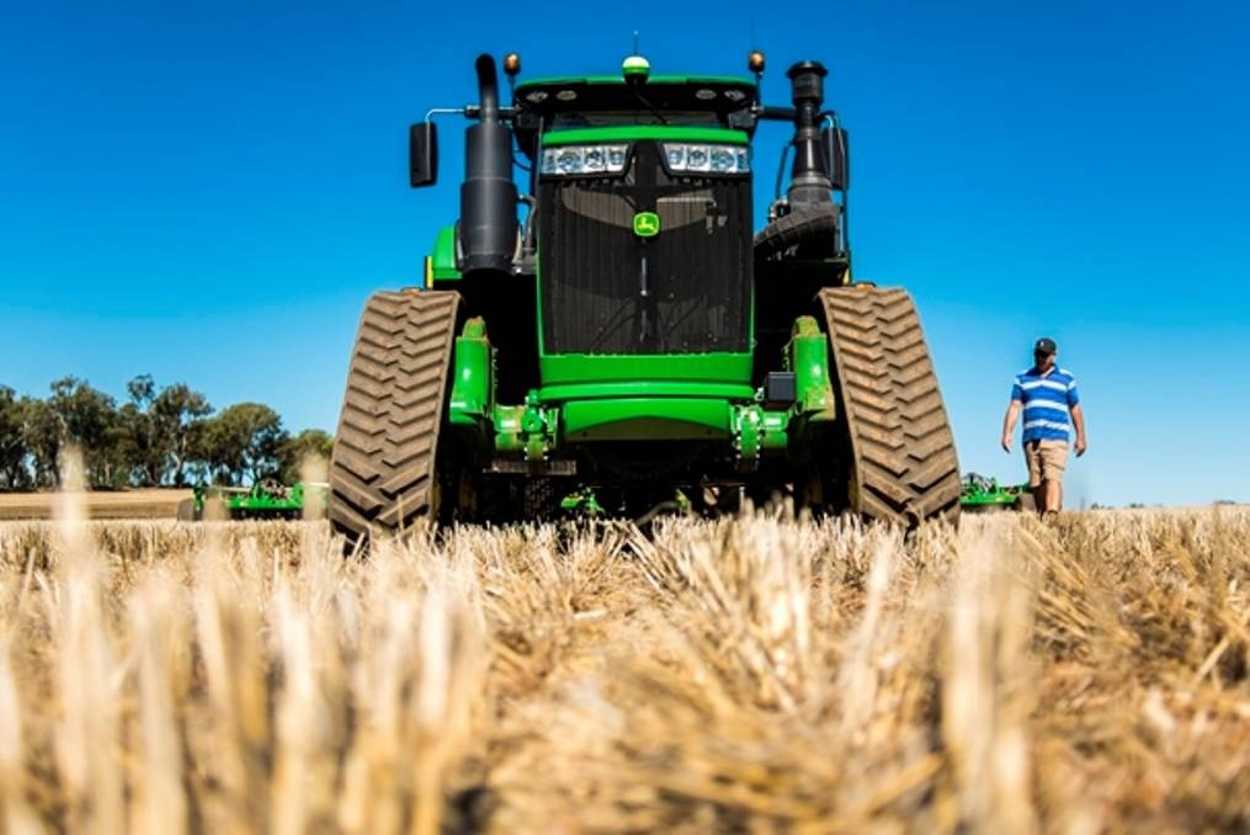With the advent of cutting-edge advancements such as precision agriculture, automated machinery, and genetically modified crops, farmers have witnessed increased productivity and efficiency. However, an unintended consequence of these advancements is the potential for rising agricultural product costs.
While technology has undeniably improved farming practices, its implementation requires significant financial investment.
The upfront costs associated with purchasing advanced machinery, upgrading infrastructure, and adopting new technologies can burden farmers, particularly smaller-scale operations.
These costs can ultimately be passed on to consumers, potentially leading to an increase in the prices of agricultural products.
The seductive promises of cutting-edge machinery, precision agriculture, and genetically modified crops have mesmerised farmers worldwide.
It is true, these technological marvels have unleashed unprecedented efficiency, capable of revolutionising the way we grow and harvest our sustenance. Yet, in their wake, they leave a trail of exorbitant expenses, shaking the very foundation of the agricultural landscape.
- Gone are the days when a humble plow and sweat-soaked brow were the tools of the trade.
The modern farmer must navigate a treacherous path strewn with financial pitfalls. To partake in the promised land of technological supremacy, one must sacrifice fortunes in the acquisition and maintenance of state-of-the-art equipment.
Precision agriculture, with its alluring array of sensors, drones, and GPS wizardry, demands an initial investment that only the wealthiest can afford. What once was a labor of love now requires the deep pockets of an industrial tycoon.
Let us not forget the insidious realm of agricultural biotechnology, where the lines between progress and profit blur into a murky abyss. Genetically modified organisms (GMOs) tantalise with their ability to yield bumper crops and fend off relentless pests. Yet, behind the scenes, a costly dance unfolds.
The alchemists of biotech toil ceaselessly, engrossed in a realm of endless R&D expenditures and burdensome regulatory processes. Their creations, marvels of science though they may be, come at a price. And it is a price we all pay, as the costs trickle down to the consumer, hidden amidst the grocery bills and weekly budgets.
But the cruel fate does not end there. It is the digital divide that plunges the dagger even deeper into the hearts of farmers across the land. In remote rural pockets, devoid of the luxuries of robust internet connectivity, dreams of technological utopia shatter.
As they stare into the abyss of a spinning dial-up connection, the farmers witness the chasm widening. Their brethren in urban centers reap the benefits of real-time data exchange, basking in the glow of instantaneous knowledge.
Though the optimists may argue that the rewards of technological innovation will ultimately offset these costs, I stand before you as a harbinger of caution. The scales may tip in favor of productivity gains and efficiency improvements, but at what cost? Must we surrender our food security at the altar of technological obsession?
- Collaborative efforts must be orchestrated.
Governments, agricultural organisations, and technology providers must band together to offer a lifeline to struggling farmers. Subsidies and grants must rain down like manna from the heavens, alleviating the financial burden of adopting these revolutionary tools.
Infrastructure investment must be prioritised, bridging the digital divide that threatens to condemn rural communities to technological oblivion.
It is time to awaken from the trance of progress, to lift the veil and gaze upon the consequences that lie beneath. The agricultural sector stands at a precipice, poised to plunge into a realm of soaring costs
Agricultural Mechanisation: Balancing Progress with Rising Costs
A Double-Edged Sword for Australian Farmers.
- The Australian agricultural machinery market is projected to register a CAGR of 7.3% during the forecast period (2022-2027).
- The rapid mechanisation of agricultural processes has become an undeniable reality in Australia.
The pursuit of enhanced productivity and the declining number of individuals engaged in farming have fueled the demand for advanced machinery across the country.
Despite the challenges posed by supply chain disruptions, the sale of more than 18,000 tractors in 2021 demonstrates the unwavering enthusiasm within the industry.
Australia’s vast expanses of available land further position it as a potential agricultural powerhouse, catering to both domestic demands and international exports.
However, amidst this progress, a significant obstacle looms large: the escalating prices of agricultural commodities, which threaten the widespread adoption of farming equipment by Australian farmers.
Addressing this challenge necessitates a multi-faceted approach. Policy interventions that aim to alleviate the financial burden on farmers should be considered.
Measures such as subsidies and incentives can provide the much-needed support for farmers to invest in mechanisation, thus ensuring the long-term viability of the industry.
Additionally, fostering collaboration between agricultural machinery manufacturers and financial institutions could facilitate flexible financing options tailored to the specific needs of farmers, enabling them to acquire the necessary equipment without excessive strain on their finances.
Research and development initiatives should focus on creating cost-effective and efficient farming technologies that cater to the unique requirements of Australian agriculture.
AG Tech Equipment Is Getting Pricier & Scarcer
Cost increases across the agriculture industry are nothing new, but what we’re hearing suggests that supply shortages we’re facing in various aspects of our lives are very much impacting the ag industry as well.
The price of equipment is a significant factor affecting the costs per acre for farmers, and it has experienced a consistent increase in prices over the years, much like land, rental rates, and commodities.
Over the past decade, the prices of new machinery have been steadily rising at a rate of approximately 4% annually. This upward trend is also reflected in the cost per acre of power and equipment, as capital recovery costs have surged by around 70% during the same time frame.
Why is farming equipment so expensive?
- Technological Advancements: Modern farming equipment is often equipped with advanced technology and features that improve efficiency, precision, and productivity.
These technological advancements require research and development, which drives up the overall cost of manufacturing the equipment. - Specialised Machinery: Farming equipment is designed to perform specific tasks efficiently. Different types of machinery, such as tractors, combines, and harvesters, are engineered to handle various operations.
The specialisation and customisation of equipment increase the complexity of manufacturing, resulting in higher costs. - Scale of Production: The production of farming equipment involves significant capital investments. Manufacturers need to cover expenses related to designing, engineering, testing, and producing machinery.
Since the demand for farming equipment is not as high as for consumer products, the economies of scale are often not as favorable, leading to higher prices. - Raw Materials: The manufacturing of farming equipment requires high-quality materials, such as steel, aluminum, and specialised components.
Fluctuations in the prices of these raw materials can impact the overall cost of manufacturing, thereby affecting the final price of the equipment. - Regulations and Safety Standards: Farming equipment must comply with various safety regulations and standards to ensure the well-being of operators and reduce potential liabilities.
Meeting these requirements often entails additional costs associated with safety features, certifications, and testing. - Maintenance and Support: Farming equipment is subject to wear and tear, and regular maintenance is necessary to keep it operational.
Manufacturers invest in after-sales support, including spare parts, repairs, and customer service, which contribute to the overall cost of the equipment.
By leveraging innovation and design, agricultural machinery manufacturers can produce equipment that strikes a balance between affordability and advanced functionality, making it accessible to a wider range of farmers.
Agricultural technology in australia has ushered in a new era of possibilities and challenges. As the country strives to harness the benefits of advanced technology, it must confront the reality of rising agricultural commodity prices.
By implementing targeted policies, fostering financial support, and driving innovation, Australia can navigate the delicate tightrope between progress and affordability.
Only through a concerted effort can the agricultural sector ensure sustainable growth and secure a prosperous future for its farmers and the nation as a whole.







